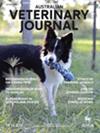Categorising reported errors and incidents from morbidity and mortality meetings (M&Ms) in a small animal multi-specialty veterinary teaching hospital
Abstract
Background
Errors in veterinary clinical settings can lead to patient harm. Morbidity and mortality meetings (M&Ms) are forums to discuss errors and incidents that can lead or have led to adverse outcomes, potential harm or unsafe conditions, with the purpose of improving patient safety in future. Despite growing implementation of M&Ms in veterinary medicine, their effectiveness in improving future patient safety may be constrained by the need for absolute confidentiality during meetings.
Objective
To pilot the use of a simple framework to categorise errors and incidents triggering M&Ms in a multi-specialty Australian veterinary teaching hospital.
Methodology
A retrospective analysis of deidentified M&M summaries over 5 years (2018–2023) from a small animal multi-specialty veterinary teaching hospital. Animal demographic and incident information were extracted, classified by incident type and severity of harm adapted from Wallis and colleagues (2019). Descriptive statistics were produced for error category, severity, incident type and quarter of the year they occurred in. Recommendations were analysed using codebook thematic analysis.
Results
There were 68 cases in total. The most common overall errors were oversight (n = 26/25.0%), drug (n = 20/19.2%), iatrogenic (n = 17, 16.3%) and staff (n = 17, 16.3%). Most cases resulted in temporary harm (n = 36, 52.9%), though 20.6% (n = 14) resulted in death, euthanasia or permanent harm. The most frequent recommendations were ‘improving communications and record keeping’, improving staff training’ and ‘ensuring appropriate equipment is available’.
Conclusion
Categorisation of errors using this simple framework can facilitate sharing of information which can be used to refine practices and improve animal safety, without compromising confidentiality of M&M meetings.


 求助内容:
求助内容: 应助结果提醒方式:
应助结果提醒方式:


